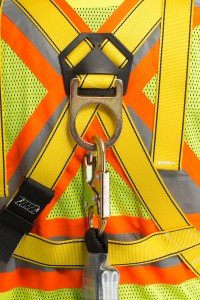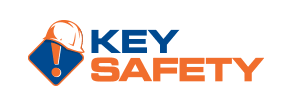In April, OSHA established the final revisions to 29 CFR 1910.269, a standard that regulates electric power generation, control, transformation, transmission, and distribution lines and equipment. Communication and information transfer from employer to employee, arc flash assessments, and training are several of the new revisions added to this regulation. According to OHS Magazine, this revision directly applies to “companies who operate, maintain, or repair electric power generation, transmission, or distribution installations, and it affects a variety of industries.”
 Electrical Hazards in the Utility Industry
Electrical Hazards in the Utility Industry
OSHA’s revisions to these mandatory standards were added to further reduce the risk to employees from electrical hazards such as:
Electrical shock hazards occur when a person is in the vicinity to make contact with an exposed circuit part energized at 50 volts to ground or more.
Electrical arc flashes occur when a rapid release of energy travels through the air from one conductor to another or to ground. When a person is in close proximity to the arc flash, severe burns can occur that generally result in serious injury or death to that person.
Electrical arc blast is caused by a rapid expansion of the air caused by an electrical arc resulting in a blast or explosion.
OSHA Arc Flash Regulaton Revisions
Below are the main revisions to the OSHA standards as highlighted by Occupational Health and Safety Online Magazine. You can view the complete list of standards here.
Training 1910.269(a)(2): The degree of training shall be determined by the risk to the employee for the hazard involved OSHA
All employees covered by this regulation must be trained in:
- Safety and emergency related work procedures necessary for their safety
- Techniques to distinguish and determining the nominal voltage exposed live parts of electric equipment
- Proper use of tool and equipment
- Recognition of electrical hazards
Information Transfer 1910.269(a)(3):
- The host employer shall inform contract employers of any information on the design, installation, conditions, and operations related to the safety of the work being performed.
- “The host and contract employers must share information with each other on safety-related matters and must coordinate their work rules and procedures.”
 Fall Protection 1910.269(g)(2):
Fall Protection 1910.269(g)(2):
- Workers must use fall protection for climbing or changing location on poles, towers, or similar structures
- On and after April 1, 2015, work-positioning equipment must be rigged so that workers can free fall no more than 0.6 meters (2 feet) OHS
Minimum Approach Distances (MAD) 1910.269(l)(3):
After April 1, 2015, the MAD were revised and reported on the appendices in the standards located here.
Protection from Flames and Electrical Arcs
For further protection from electric arcs, OSHA has provided the following requirements for providing FR Clothing:
- Employers must assess, identify and estimate exposed flame or electric arc hazards and incident heat energy of potential electric arcs hazards.
- Employers must provide PPE with a rating equal or greater than the estimated heat energy.
De-energizing Lines and Equipment
If you have more than one crew working on a line they must coordinate and have one worker in charge or separate and tag de-energizing and re-energizing lines and equipment of each crew.
OSHA 29 CFR 1910.269 is a very comprehensive set of standards for the utility industry. For more the entire standards and revisions visit the OSHA website. Key Safety prides itself on its determination to provide PPE and safety services to the Greater Houston area. We learn about your risks and hazards and have the expertise to provide the highest quality PPE that keep employees safe and compliant.
Contact Us today for more information on your PPE needs. Your employees’ safety is our number one concern.






